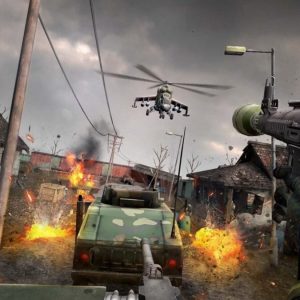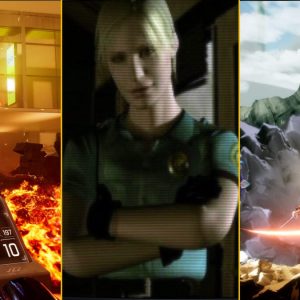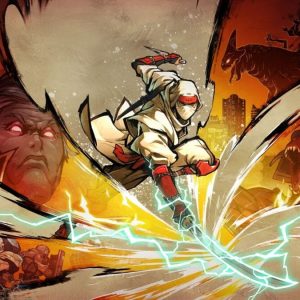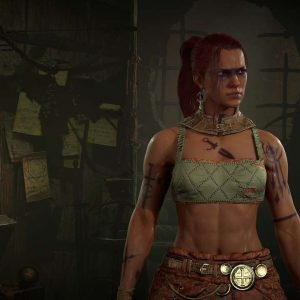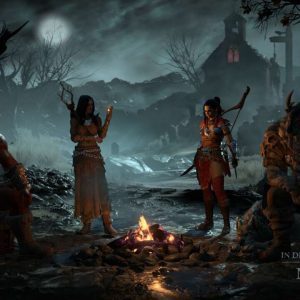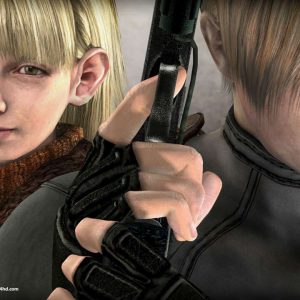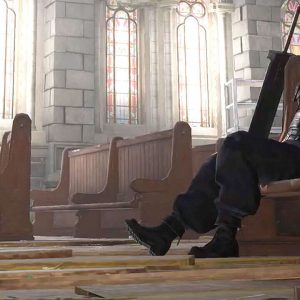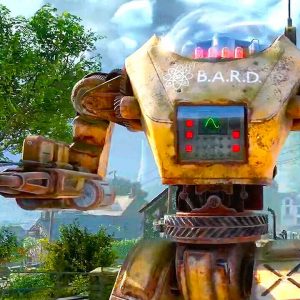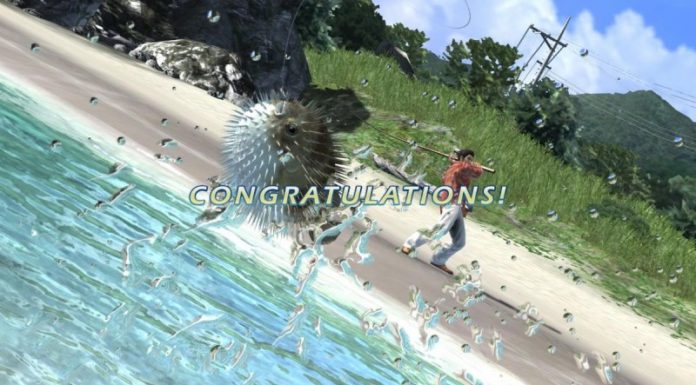Compulsion Games’ South of Midnight seems to be exactly what I expected: an action-adventure game featuring platforming and combat that feels reminiscent of the genre during the PlayStation 2 era. Having now played the game for about 90 minutes, the gameplay doesn’t wow me. That said, South of Midnight doesn’t feel like a game that needs to deliver a never-before-seen gameplay experience. The focal point of the game is clearly its celebration of the myths, sounds, culture, and language of the American South, and in that respect, South of Midnight feels like it’s going to exceed those expectations.
You play as Hazel in South of Midnight, desperate to find her mother after their home washes away in a hurricane. Early into her journey, she learns to be a weaver, a person who can both unravel the corrupting forces influencing a community and knit together constructs to glide or leap across dangerous swampland. As Hazel searches for her mom, her abilities and skills as a weaver continue to develop and she comes across numerous legendary monsters, beings who were once humans or animals and have since been twisted into mythical larger-than-life creatures by the trauma and tragedy that surrounded them in life. As a weaver, Hazel’s job is to put these legends to rest.

My time with the game saw me step in during an early chapter, which immediately precedes the level and boss battle I saw during my trip to Compulsion Games last year. The chapter starts with Hazel having only recently become a weaver and making the acquaintance of Catfish, who promises to help her find her mother if she first frees him from the grip of a colossal tree that resembles a scared and sad-looking man. The level then establishes the gameplay loop that South of Midnight will presumably follow for the rest of the story: Hazel platforms through largely linear levels, encountering and fighting groups of enemies who guard the memories that detail the truth behind a local legend.
I’m not sold on South of Midnight’s platforming or combat. Admittedly, this demo made me very motion-sick (I assume it was the stop-motion-inspired animation style, even though stop-motion has never been a problem for me before), so I was a tad cranky by the time I finished up. Still, South of Midnight isn’t an especially rewarding gameplay experience. You can mess up the platforming and miss a jump, but the section I played through had their platforms so close together and Hazel is so acrobatic that I never did, with the exception of one early moment when I purposely jumped into the swamp water to see whether Hazel can swim. Spoiler: she cannot. The mistake cost me a portion of Hazel’s health, but since there are no enemies to contend with during the platforming sections, this setback didn’t create any tension like what’s seen in platformers that do something similar.

It’s worth noting that the chapter I played through felt extremely early into Hazel’s adventure, very much like a bike-with-training-wheels section. So the platforming could become more challenging and subsequently more fulfilling to clear later on. From what I’ve seen so far, however, Hazel’s double-jumping, gliding, and wall-running through the bayou doesn’t add any excitement to the process of moving from point A to B. The most disappointing part of the demo was a chase sequence right at the end, in which all Hazel had to do was jump back and forth between opposing walls she was running along. There was no floor, and the crescendo in the music curated a sense of tension and suspense, but when all I was doing was jumping back and forth between walls to avoid easy-to-spot gaps, it trivialized what felt like should have been this incredibly suspenseful run for Hazel’s life.
Combat also feels somewhat trivial in service to the narrative. As a weaver, I expected Hazel to possess abilities and movements that reflected the act of suturing, knitting, or tearing, an assumption strengthened by Hazel wielding a spindle and weaving hooks as weapons in combat. Instead, Hazel uses her tools more like twin daggers, needing to dodge out of the way of enemy attacks and slash them enough times so that a prompt pops to unweave them, which Hazel does with a cinematic flourish. She possesses some abilities to augment her tools, like a stun and telekinetic shove, that use a cooldown to keep you from spamming them, and a skill tree lets you unlock additional moves for Hazel, like a ground-pound.

Altogether it’s fine. South of Midnight certainly doesn’t quite reach the acrobatic triumphs of something like Sunset Overdrive, nor does Hazel have a block or counter (in what I played, at least–maybe she gets one later), which are necessary mechanics for a more strategic and tactile combat experience on par with Hi-Fi Rush. Since Hazel isn’t all that nimble during combat, the enemies can’t be all that fast and because Hazel cannot block or counter, the enemies’ attack patterns can’t be all that complex. What’s left is a gameplay experience in which you have Hazel dodge out of the way of an enemy’s clearly telegraphed attacks, wail on them with melee attacks and abilities, and repeat. Since Hazel typically takes on at least three or four enemies at a time, there’s a challenge in needing to keep track of where combatants’ placements are, but no enemy I fought had a particular weakness or counter to one of Hazel’s moves, so the strategy of wildly slashing worked on everything. And, of course, once you thin the herd a bit and kill one or two enemies, the remaining enemies don’t have the numbers to pose a rewarding challenge.
I get the sense that combat isn’t supposed to be all that hard, though, or at least not be a roadblock in the player’s path. Each enemy encounter I faced had a pick-up within the combat arena that I could go and interact with to replenish Hazel’s health, trivializing each fight further by ensuring I was never close to death.
The one big exception I could see to this is the boss battles. When Hazel faces these local legends, the encounter can play out in a few different ways. When I went to Compulsion Games’ office and saw the chapter that immediately follows this demo, it concluded with Hazel taking on the colossal Two-Toed Tom. It looked incredible, with Hazel facing Tom through multiple phases of increasing difficulty, but I didn’t get a chance to play it myself. In the chapter I played for this demo, the “final battle” was climbing a tree along a clearly marked path. It was quite cinematic and the slow build-up of the music made the experience feel suitably epic, but it lacked the gravitas of the Two-Toed Tom boss fight I’ve seen (as well as the brief look at Huggin’ Molly’s boss fight during the South of Midnight trailer that debuted during 2025’s Xbox Developer Direct). The boss battles could be where the combat mechanics come together in a more fulfilling way.

All that said: South of Midnight’s art direction, soundtrack, character design, voice acting, and writing seem fantastic, so despite my misgivings with the rest of the game, I want to dive into the full story to see and hear and experience more of its world. Similar to games like Kena: Bridge of Spirits, Tales of Kenzera: Zua, or Assassin’s Creed: Origins, South of Midnight feels like it’s going to be an experience long remembered for its setting–the real star of the show. There’s clearly been a lot of great care here to not only honor the sights and sounds of the American South, but celebrate the culture and stories told by the people who call the place home.
Lots of love has been devoted to the additional fantasy elements too, with fun nods to sayings or slang in regards to Hazel’s abilities–she uses a bottle to collect the feelings surrounding each legend, for example, in a nod to “bottling up emotions.” What I love most, however, is that South of Midnight seems to not be filled to the brim with documents to find, audio recordings to uncover, or NPCs to explain every facet of whatever fantastical scenario is happening to Hazel. So far, the game has allowed me to just exist in its fantasy, fumbling for answers alongside Hazel, maintaining the overall mysticism of the locale and the legends told about the people and creatures who live there.

It adds an almost spooky quality to the adventure, framing Hazel as a young woman who has stumbled into something otherworldly that can never be truly understood or explained. What I’ve played so far has not quite reached gothic fantasy, but I have my fingers crossed that that’s where the story is going. Regardless, however, the storytelling and worldbuilding is superb and the voice acting (especially actor Adriyan Rae, who voices Hazel) is remarkably strong, adding a ton of characterization to already memorable character designs.
I hope this love and care extends to the platforming and combat in the rest of South of Midnight, but even if it doesn’t, the game feels like it will at least be an exceptional tale that’s set in a very real region of the world that video games (especially in the AAA space) have largely ignored.
South of Midnight is set to launch for Xbox Series X|S, Game Pass, and PC on April 8.





